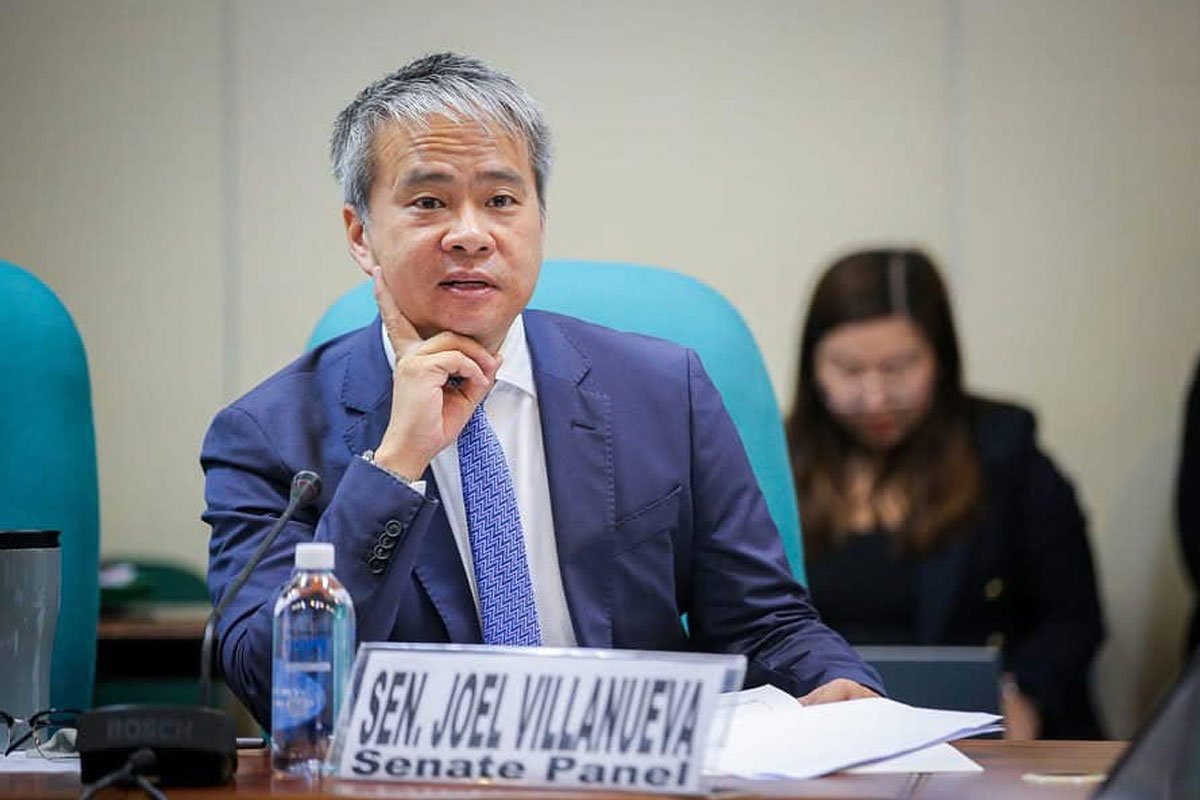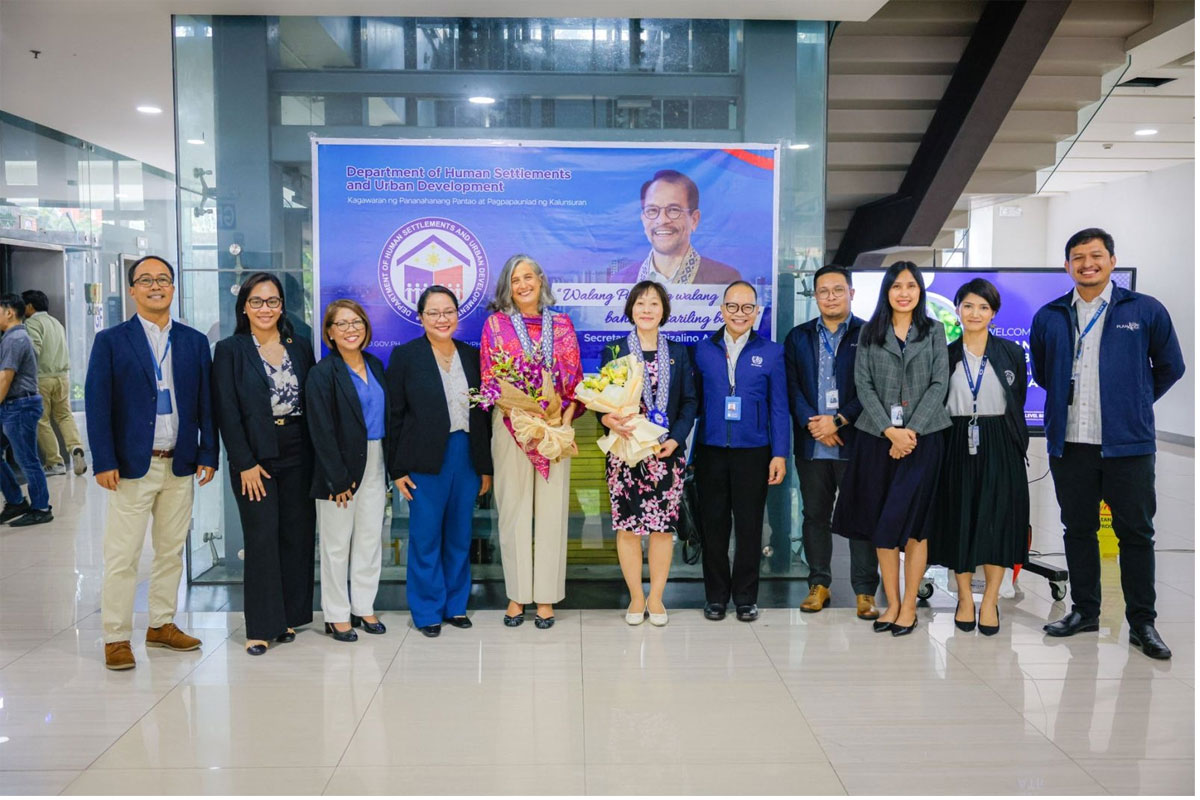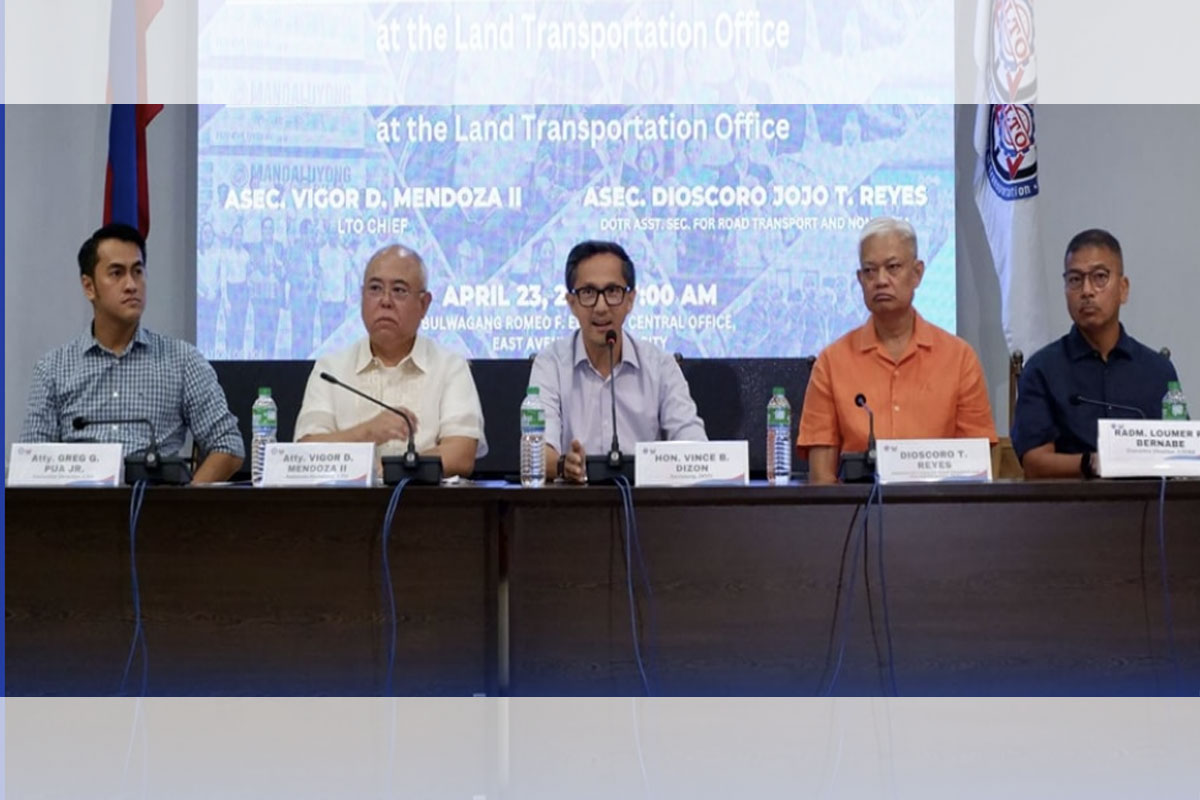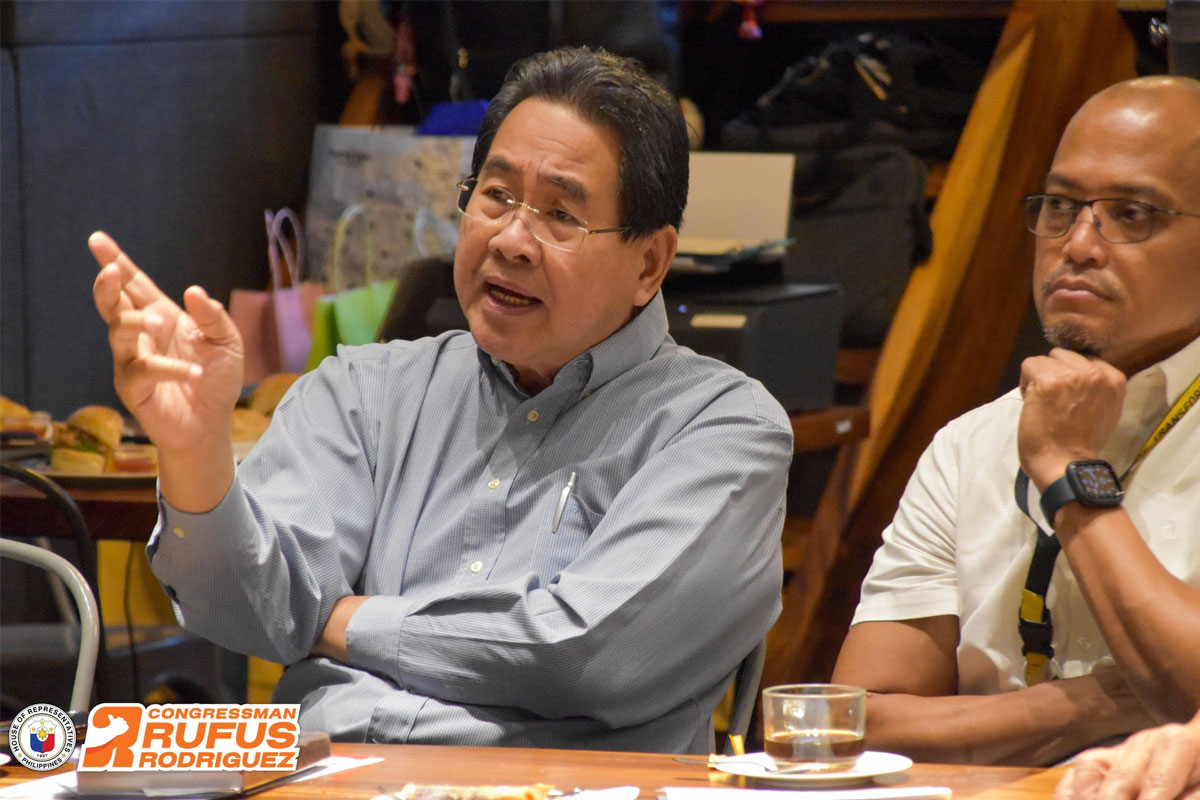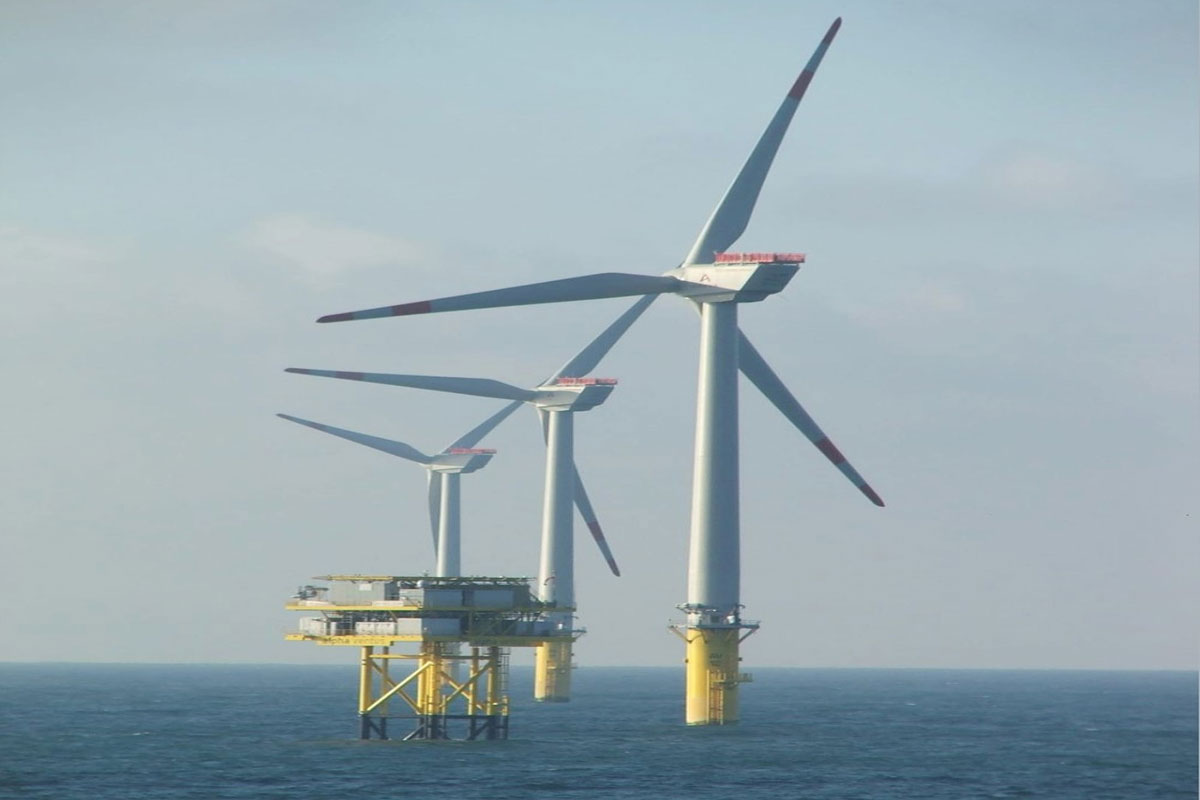 Source: Rising Philippines FB file photo
Source: Rising Philippines FB file photo
1st, biggest PH offshore wind farm to rise in CamSur — Villafuerte
AFTER emerging as a hub for ecotourism and extreme sports, Camarines Sur will likely become the country’s center for wind energy generation with the government-approved establishment there of at least 16 facilities harnessing this renewable source, notably a Danish-funded P163-billion project that promises to become the country’s first and biggest offshore wind (OSW) farm with a capacity of one gigawatt (GW), according to Camarines Sur Rep. LRay Villafuerte.
“This pioneering wind farm to be built by Danish infrastructure investment firm Copenhagen Infrastructure Partners (CIP) on San Miguel Bay, along with 15 more offshore wind projects (OSW), will help the Marcos administration accelerate its planned transition from fossil fuel to renewables for the radical reduction of the Philippines’ carbon footprint,”said Villafuerte, National Unity Party (NUP) president.
This CIP offshore facility on San Miguel Bay is designed to tap wind power as a variable renewable energy (VRE) source, said the congressman representing CamSur’s second legislative district.
“Once the CIP-funded clean energy project costing a whopping P162.9 billion is built on San Miguel Bay in CamSur, hopefully by 2028, it will become the first and single biggest OSW farm in the Philippines,” Villafuerte added.
Offshore wind farms use turbines that are built in the water to generate power from winds blowing across the sea, and are considered more efficient in producing energy for electricity because of the higher speed of winds in the ocean, he said.
He said that onshore wind farms, on the other hand, make use of turbines built on land to generate wind energy.
However, both offshore and onshore facilities using wind for generating energy, along with other VRE sources like solar power, are essential to the global switch from dirty, non-renewable fossil fuel to a zero-carbon electricity system, said Villafuerte, who had served as three-term governor before his election to the House of Representatives.
He said that, “The 16 offshore wind power projects in CamSur, once up and running, will become prime contributors of VRE power in the Philippines, in support of the Marcos administration’s decarbonization goal of significantly increasing the share of indigenous sources like wind and solar in our country’s energy mix.”
These OSW projects have a total potential capacity of 7,668 megawatts (MW), he said.
Aside from helping the DOE meet the government’s long-term target of generating 35% of the domestic electricity requirements from renewables by 2030 and an even higher 50% by 2040, Villafuerte noted that these CamSur wind farms will further stimulate economic activity and tourism in the province and create several thousand jobs.
“These green or clean energy projects will likewise boost CamSur’s tourism business as these would-be wind farms are expected to attract tourists to the green project sites,” he said.
It was during Villafuerte’s watch as governor that the province became a focal point of extreme sports events with the provincial government’s construction of the CamSur Watersports Complex (CWC), now considered the world’s best wakeboarding complex; and the promotion of Caramoan Islands—with its caves plus white and pink sand beaches—as an ecotourism resort, especially after becoming the site of several international editions of the global reality TV hit “Survivor.”
“Once operational, these wind farms will make up another feather in our province’s cap as these trailblazing VRE projects will transform CamSur into a trailblazer in wind power generation,” Villafuerte said.
Villafuerte said the Danish-funded 1 gigawatt (GW) wind farm in San Miguel Bay is located in an ideal site because of the following: (1) excellent wind speed of 7.33 m/s (meters per second) in this San Miguel Bay area, (2) there is no overlap with any protected natural area, (3) is near the Naga substation of the National Grid Corp. of the Philippines (NGCP), and (4) has a low likelihood of being hit by typhoons because of its in-bay location.
San Miguel Bay is on the borders of both CamSur and Camarines Norte, but the project is actually located on this bay’s southern part in CamSur.
Villafuerte said the Copenhagen-based CIP is building its San Miguel Bay wind farm through its local affiliate, Copenhagen Infrastructure New Markets Fund Corp. (CINMF), which secured various wind energy service contracts from the DOE in March 2023 as the country’s first 100% foreign developer in this energy sector.
The Board of Investment (BOI) also granted Green Lane Certificates of Endorsement for CINMF projects to expedite the processing of its permits, he said.
Last year, the DOE awarded some $5 billion-worth of contracts to CINMF for its projects with a total capacity of 2,000 MW.
Villafuerte said the San Miguel Bay wind farm is projected to create 2,500 jobs.
He said that sometime in May, CINMF installed two vertical scanning Light Detection and Ranging devices (LIDARs) in its bay project site.
These non-intrusive LIDAR scanners make use of laser technology to measure wind speed.
Villafuerte said that one of the other RE projects in CamSur is the Libmanan onshore wind farm, which is the first ever project in wind power generation of the Aboitiz Power Corp. (AboitizPower), and which this Malabon-based firm is undertaking through a joint venture (JV) with Mainstream Renewable Power Corp.
Headquartered in Dublin, Ireland, Mainstream has green energy projects with a combined capacity of 100 GW, and has raised energy and related infrastructure investments totaling 19 billion euros from over 140 international institutional investors.
AboitizPower president-chief executive officer (CEO) Emmanuel Rubio said the company’s JV with Mainstream in wind energy underlines its aspiration to become a strong RE partner here and abroad over the next decade as it continues serving the critical baseload needs of the Philippines.
Mainstream said: “The Philippines is one of our priority markets in the region and we are committed to working in partnership with AboitizPower to support the country’s ambitious and commendable target to cut its greenhouse gas emissions by 75% by 2030.”
As for the San Miguel Bay OSW farm, CamSur Gov. Vicenzo Renato Luigi Villafuerte, said, “We are honored to be a part of this transformative journey and pledge our unwavering support to Ambassador Mellbin and CIP Co-CEO Damgaard in their mission to harness the immense potential of offshore wind energy, ultimately propelling CamSur to even greater heights of progress and innovation.”
Gov. Villafuerte said in a media interview that the San Miguel Bay project, which was launched on May 30 at the CWC in CamSur’s capital town of Pili, will create about 2,500 jobs and spur indirect economic benefits, including the supply by local communities of food, lodging, maintenance along with other goods and services needed by the wind farm.
On top of generating jobs and huge tax revenue, the governor said the CINMF project will boost local tourism, as the huge wind farm will further make CamSur a unique must-see place because of the wind turbines in the first-of-its-kind VRE venture.
The Danish Embassy in Manila, which helped CINMF install the wind scanners, said the deployment of the LIDARs marked “a major step in the development of its offshore wind power projects in the Philippines.
Danish Ambassador Franz-Michael Skjold Mellbin said the installation last May 30 of the two LIDARs marked, “A milestone in the Philippines’ green energy transformation that promises affordable, abundant and reliable electricity to all Filipinos. Working closely together with CIP, the Philippine government and the local government of Camarines Sur have taken a key step towards the largest offshore wind farm in the Philippines, bringing jobs to the people of Camarines Sur and power to fuel continued economic growth in the country.”
CIP offshore wind co-CEO for the Philippines Rune Damgaard said that, “CIP is very grateful for the incredible support it has received from the local government of Camarines Sur and the various national and regional agencies.”
DOE assistant secretary Ruby de Guzman said the LIDARs are important in assessing available wind resources.
The project, she said, would help the DOE attain the government’s goal of increasing RE share in the Philippine energy mix to 35% by 2030 and 50% by 2040.
The CamSur provincial government has also positioned the province to gain a foothold in the $35-billion global flavor and fragrance (F&F) industry with a JV on the mega production of Vetiver oil, which is a key ingredient in the making of perfumes, aromatic oils, creams and soaps along with other personal care (PC) products that are widely in demand across the globe.
The congressman said the provincial local government unit (LGU) under Gov. Villafuerte has partnered with leading pharmaceutical company Iba Botanicals in developing a 7,500-hectare (ha) farmland for vetiver oil production.
Villafuerte said the JV covers the development of the world’s largest integrated essential oils facility based on a locally available variety of vetiver grass, and its dedicated steam distillation facilities will make it the world’s largest integrated vetiver oil production facility when it starts full-scale harvest and commercial operation next year.
Total investments in the plantation, distillery and associated infrastructure will exceed P500 million for this Vetiver project that will create some 800 new jobs and provide a strategic supply of raw materials for the $35-billion Flavor & Fragrance Industry (FFI).





